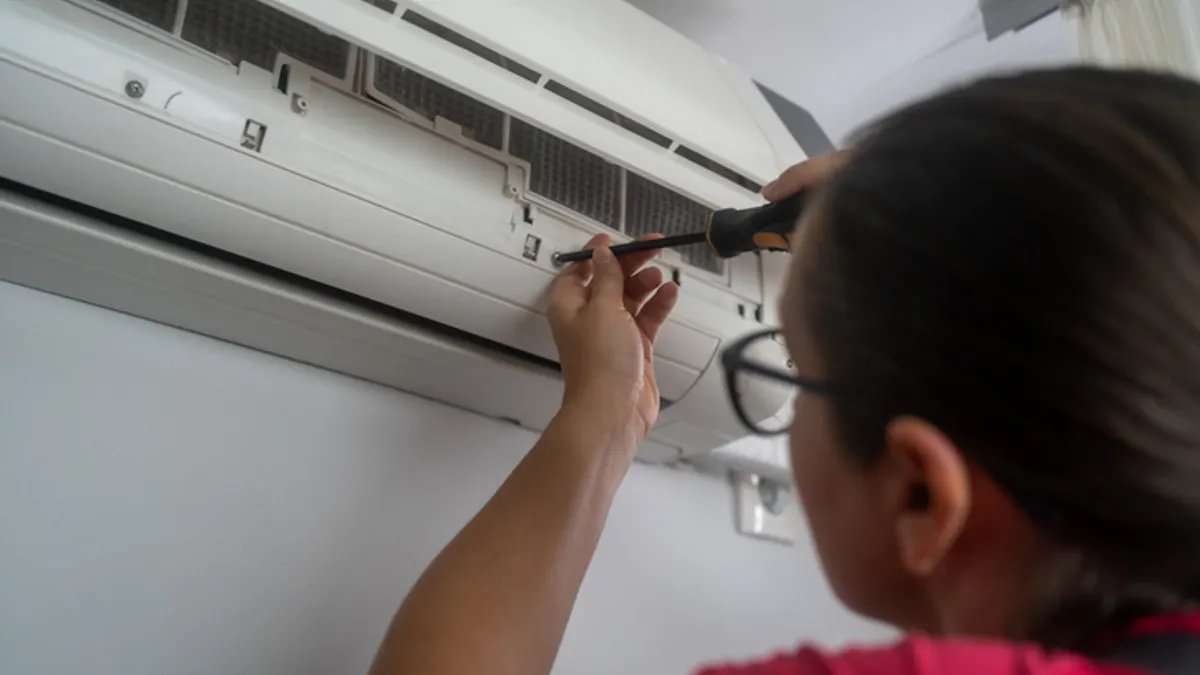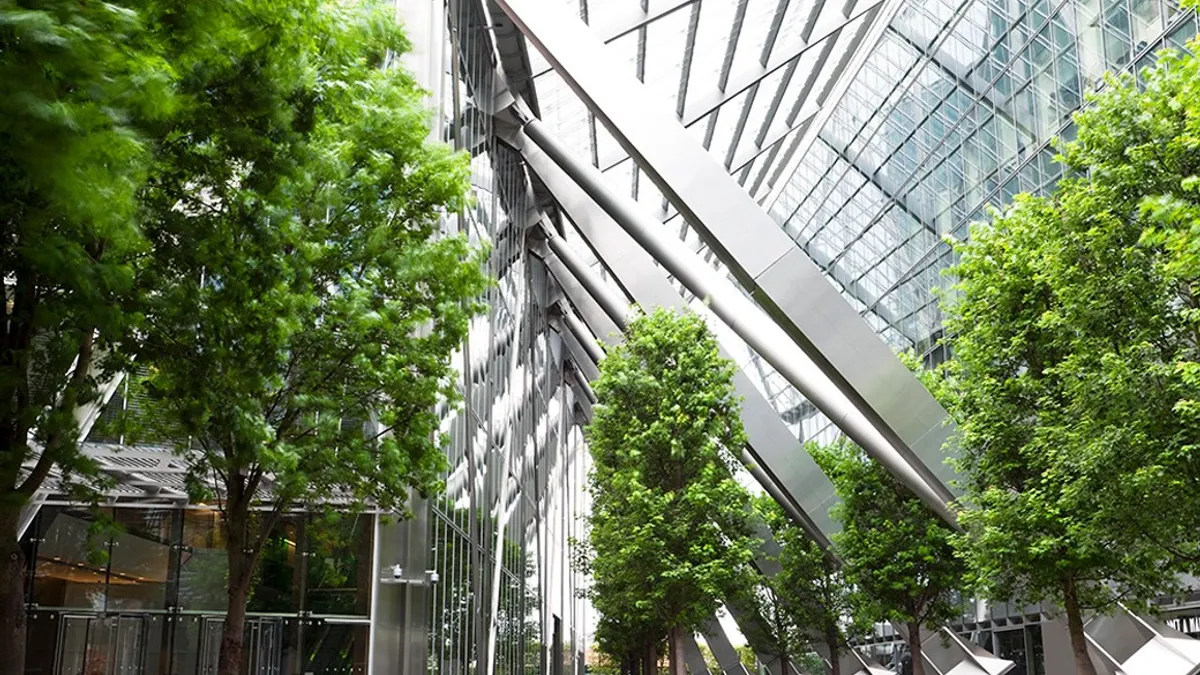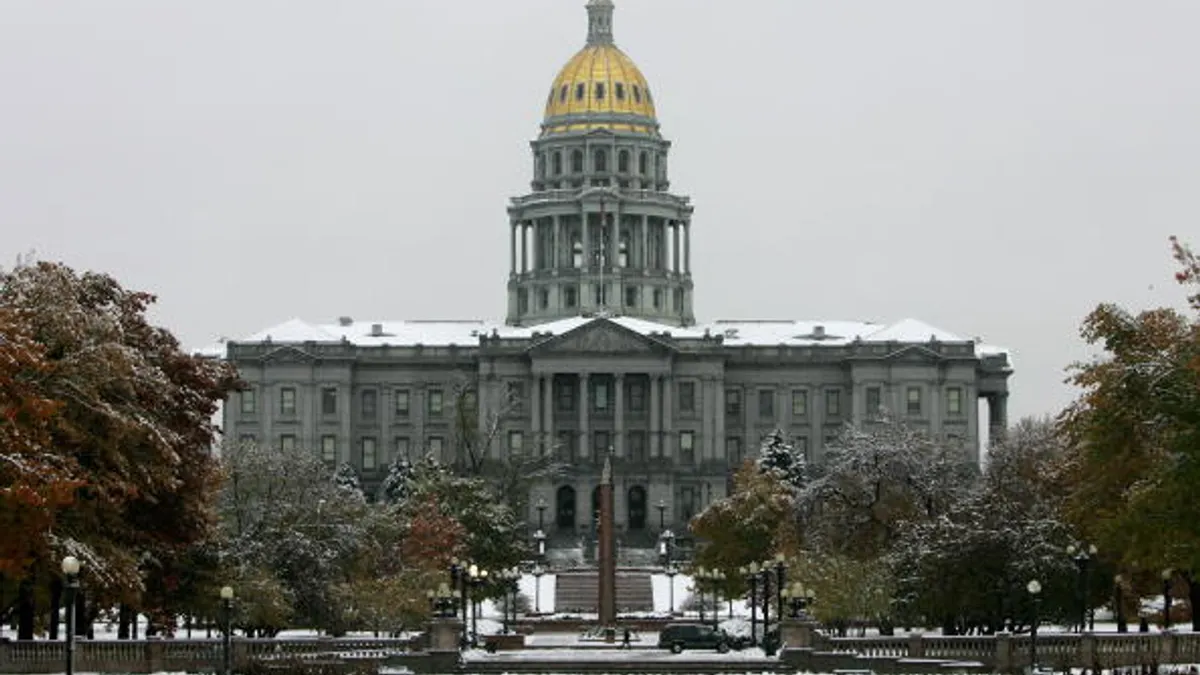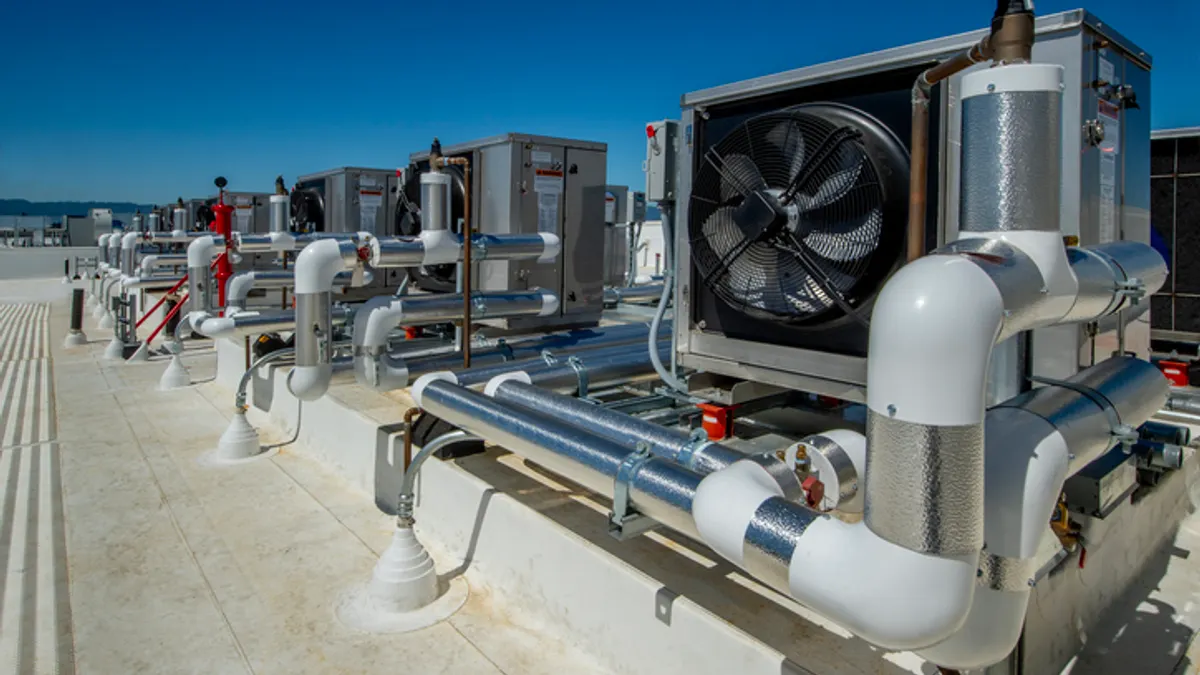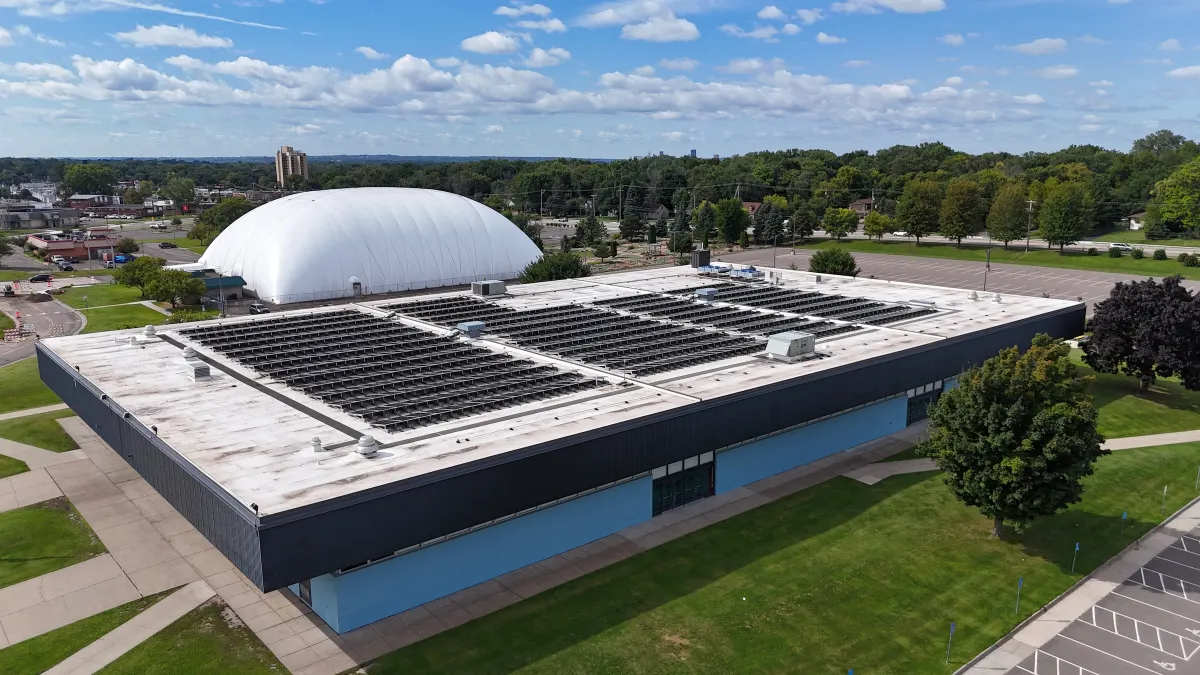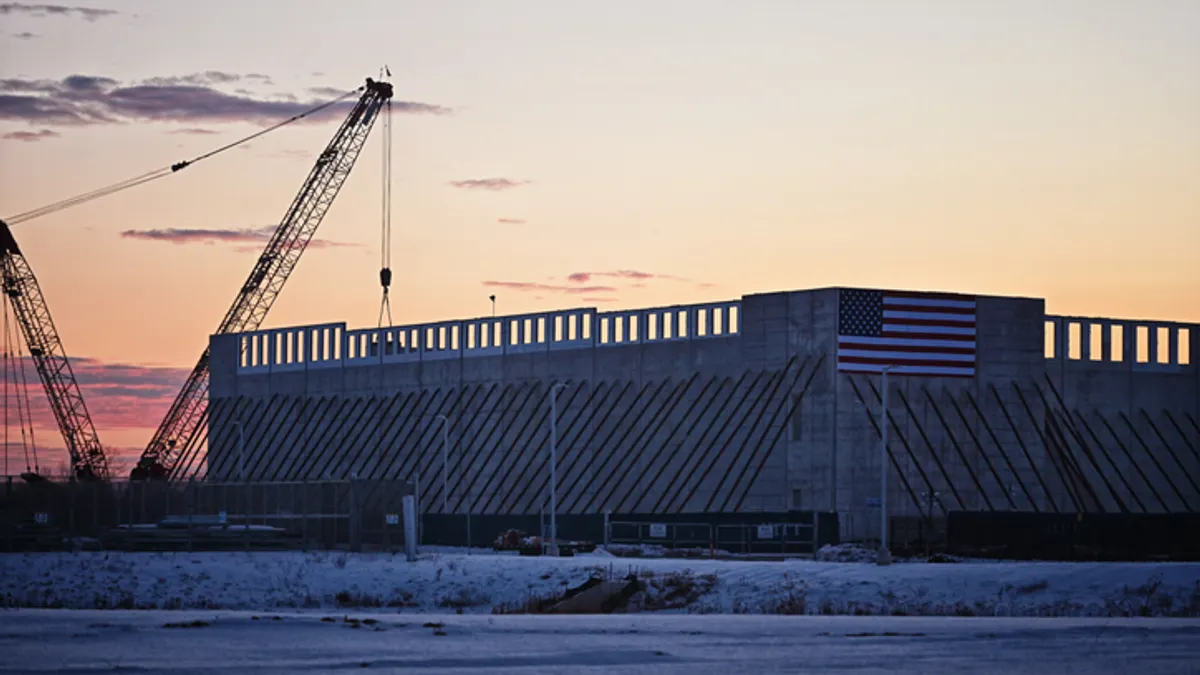Alex Dews is CEO of the Institute for Market Transformation. Opinions are the author’s own.
Since 2000 the United States has grown by 60 million people while GDP has expanded by 170%, yet energy consumption has stayed relatively flat. How did we do that? In part, we made buildings more efficient.

With electricity demand surging, especially from data centers and the growth in artificial intelligence, there is increasing concern over how to meet our power needs while balancing grid resilience, affordability and climate impacts. The supply side of this equation tends to get more attention than the demand side of the equation. How do we get more energy generation across the finish line?
But that’s not a fully informed way to look at the issue; it’s on the demand side that we can make an immediate difference, because increasing energy efficiency in buildings is a proven, scalable solution to both energy affordability and decarbonization. The bottom line is that, for significantly lower cost than new power generation, we can meet a large part of energy demand through improved building energy efficiency and energy use time shifts.
Buildings’ role in energy infrastructure
Buildings use nearly 75% of U.S. electricity and more than a third of natural gas. A McKinsey study, “Powering a new era of US energy demand,” leads with a graphic showing that buildings comprise the majority of demand, but the study does not mention buildings in its analysis or proposed solutions. Similarly, as the federal government wipes out clean energy investments, talk about climate action in this new context largely ignores the role of buildings. A recent episode of the Ezra Klein Show, entitled “Is Decarbonization Dead?” mentions buildings exactly zero times even though they are the largest single end-user of energy.
As many as 8 in ten buildings that will be in use 25 years from now are already built, and the EPA estimates that 30% of the energy used in commercial buildings today is wasted. Older buildings, in particular, represent a huge amount of overall energy use, and a major untapped opportunity to reduce demand.
Of course, supply-side discussions matter because the fuels we use to generate energy offer starkly different paths forward. We can take the path of investing in clean technology that reduces air pollution and helps mitigate the worst effects of climate change. Alternatively, we can prop up fossil fuels at great cost to our physical health and financial well-being. In addition to dirtier air, utility customers may be stuck with the bill for stranded assets if AI turns out to be a market bubble.
But demand determines how much energy we need to produce. In essence, energy efficiency should be thought of as a demand-side infrastructure solution. Greater demand raises prices for all fuel types, and it makes power outages more likely. If there’s one thing everyone agrees on, it’s that we don’t want blackouts while waiting for more power to come online.
Addressing affordability and decarbonization
For a fraction of the cost, time and difficulty of adding new power plants, we can improve the way our buildings use energy. In less than a year, building efficiency and demand flexibility — like pre-cooling buildings on summer days — can make a difference in lowering electric demand, improving affordability and keeping the lights on. By contrast, new transmission lines and power plants typically take more than a decade for design, permitting and construction.
Energy use by the building sector has remained relatively flat for the last 20 years, even while adding more square footage and electric devices. That’s because building codes and appliance standards continually improve, making newly constructed buildings more efficient.
Efficient buildings cost less to run, and with smart lease structures, both the landlord and tenant can benefit. Efficient buildings are also more valuable. Six academic studies found that ENERGY STAR certified buildings earn a 5-16% rental premium, a 6-13% sales price premium and 3-6% higher occupancy.
Furthermore, upgrading less-efficient buildings creates local jobs that can’t be outsourced. These jobs can be done by people with a range of skills and experience. Policymakers can intentionally grow these jobs in areas with limited opportunities and target job training to those residents. In 2024, there were 2,290,179 energy efficiency jobs contributing to the U.S. economy, constituting the majority of jobs in the clean energy sector and outnumbering all fossil fuel extraction and processing jobs, according to the U.S. Department of Energy.
For anyone who cares about climate action, buildings are critical. In many urban communities, buildings represent 50%-75% of greenhouse gas emissions. That means there is simply no way to meet climate goals without reducing building energy use. And unlike clean energy, most policies that influence building energy efficiency are passed and implemented by states and localities, making them less vulnerable to changes in federal incentives. More than 50 jurisdictions have benchmarking laws that require building owners to track their energy use and 15 have passed building performance standards that set energy reduction targets.
Policymakers should engage both real estate professionals and residents in efforts to improve buildings’ energy efficiency, creating opportunities for greater civic engagement and discussion about the future each community wants to create. Building energy code advancements have been powerful tools for improving newly constructed buildings. Building performance standards, which drive upgrades to existing buildings, have the potential to reduce energy use dramatically. The National Building Performance Standards Coalition is a group of 49 local and state governments committed to passing such policies. If all members of this coalition adopted BPS policies, the energy savings by 2040 could eliminate the need for more than 100 gas power plants.
More-efficient buildings offer beneficial outcomes for everyone: fewer taxpayer dollars, lower individual and business utility bills, higher net operating income, healthier air and lower greenhouse gas emissions. Philanthropy, state and local governments and businesses need to work together to reduce energy waste in buildings. Energy efficiency may not be attracting attention, but it is a proven solution that is cheaper, faster and more practical than most supply-side alternatives.



